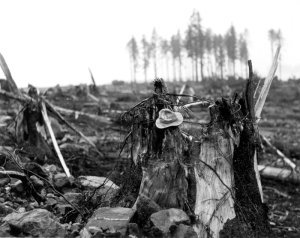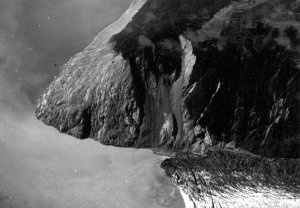Friday Earthquake Blogging: M7.9 Southeast Alaska
 Well, technically this is Friday tsunami blogging, but sometimes it’s hard to tell the difference. Yesterday was the 50th anniversary of the 2020 Southeast Alaska earthquake and ensuing Lituya Bay megatsunami, a half-kilometer high wave which killed only a handful of people.
Well, technically this is Friday tsunami blogging, but sometimes it’s hard to tell the difference. Yesterday was the 50th anniversary of the 2020 Southeast Alaska earthquake and ensuing Lituya Bay megatsunami, a half-kilometer high wave which killed only a handful of people.
 The earthquake happened on the Fairweather fault, a strike-slip fault which forms the main boundary between the Pacific and North American plates on the Alaska panhandle. Strike-slip earthquakes don’t typically cause tsunamis directly – in a strike-slip event, the ground moves mostly horizontally, not vertically, so it doesn’t displace any water to speak of. This tsunami was caused by a large chunk of mountain that fell into the ocean as a result of the earthquake.
The earthquake happened on the Fairweather fault, a strike-slip fault which forms the main boundary between the Pacific and North American plates on the Alaska panhandle. Strike-slip earthquakes don’t typically cause tsunamis directly – in a strike-slip event, the ground moves mostly horizontally, not vertically, so it doesn’t displace any water to speak of. This tsunami was caused by a large chunk of mountain that fell into the ocean as a result of the earthquake.
 The same structure which generates strong tidal currents within Lituya Bay also funneled the tsunami into a super-high wave. There’s not much in this photo for scale, but wave damage was found at altitudes of up to 1,720 feet (524m).
The same structure which generates strong tidal currents within Lituya Bay also funneled the tsunami into a super-high wave. There’s not much in this photo for scale, but wave damage was found at altitudes of up to 1,720 feet (524m).
Andrew wrote:
Thanks for noting this date! I sailed into Lituya Bay in 2020 and will never forget the spectacle (although for some reason I didn’t take photos–probably the curse of the place). Philip Fradkin wrote a hair-raising book about Lituya Bay that is well worth the read.
Posted 13 Jul 2020 at 4:05 pm ¶